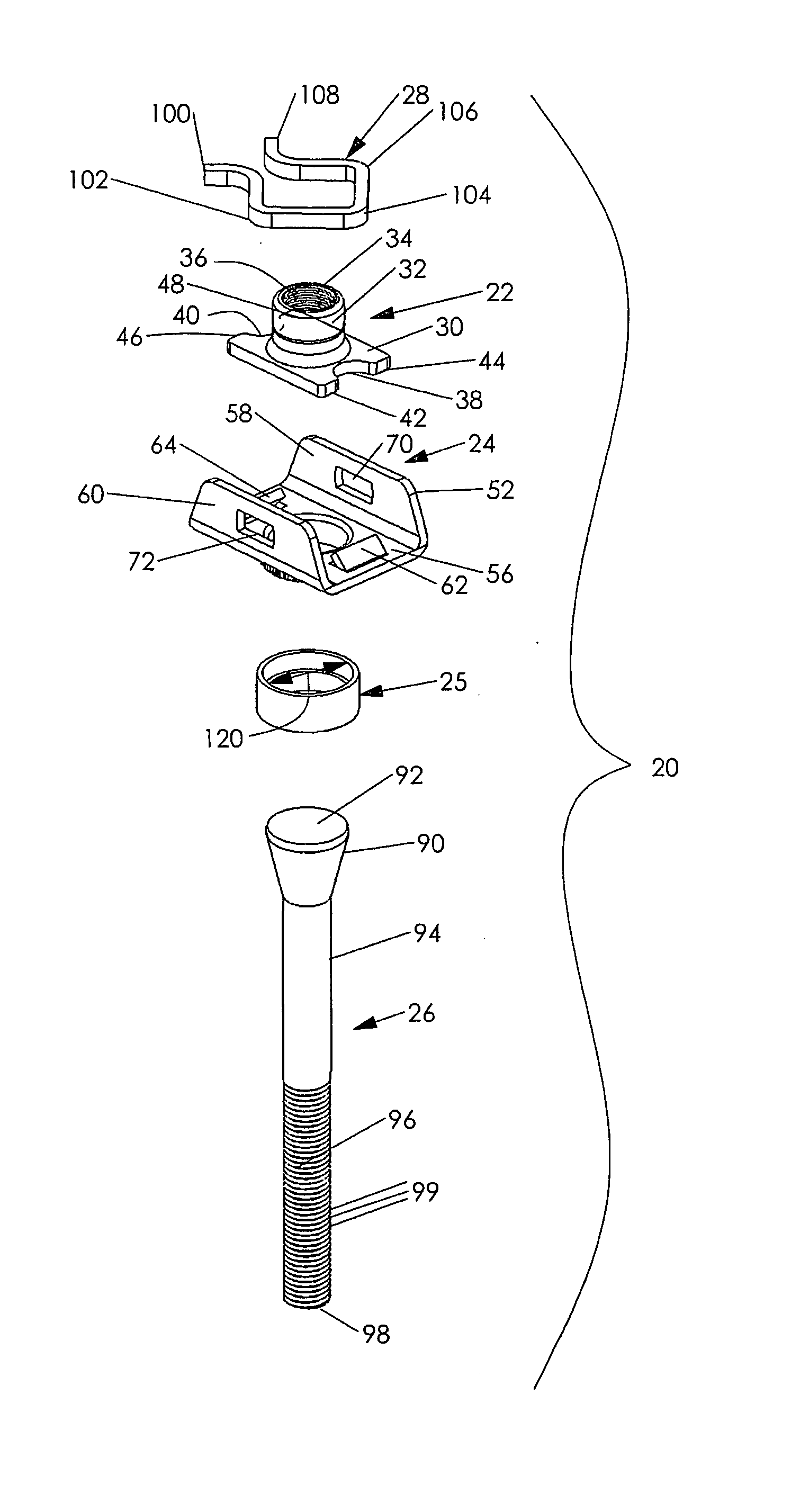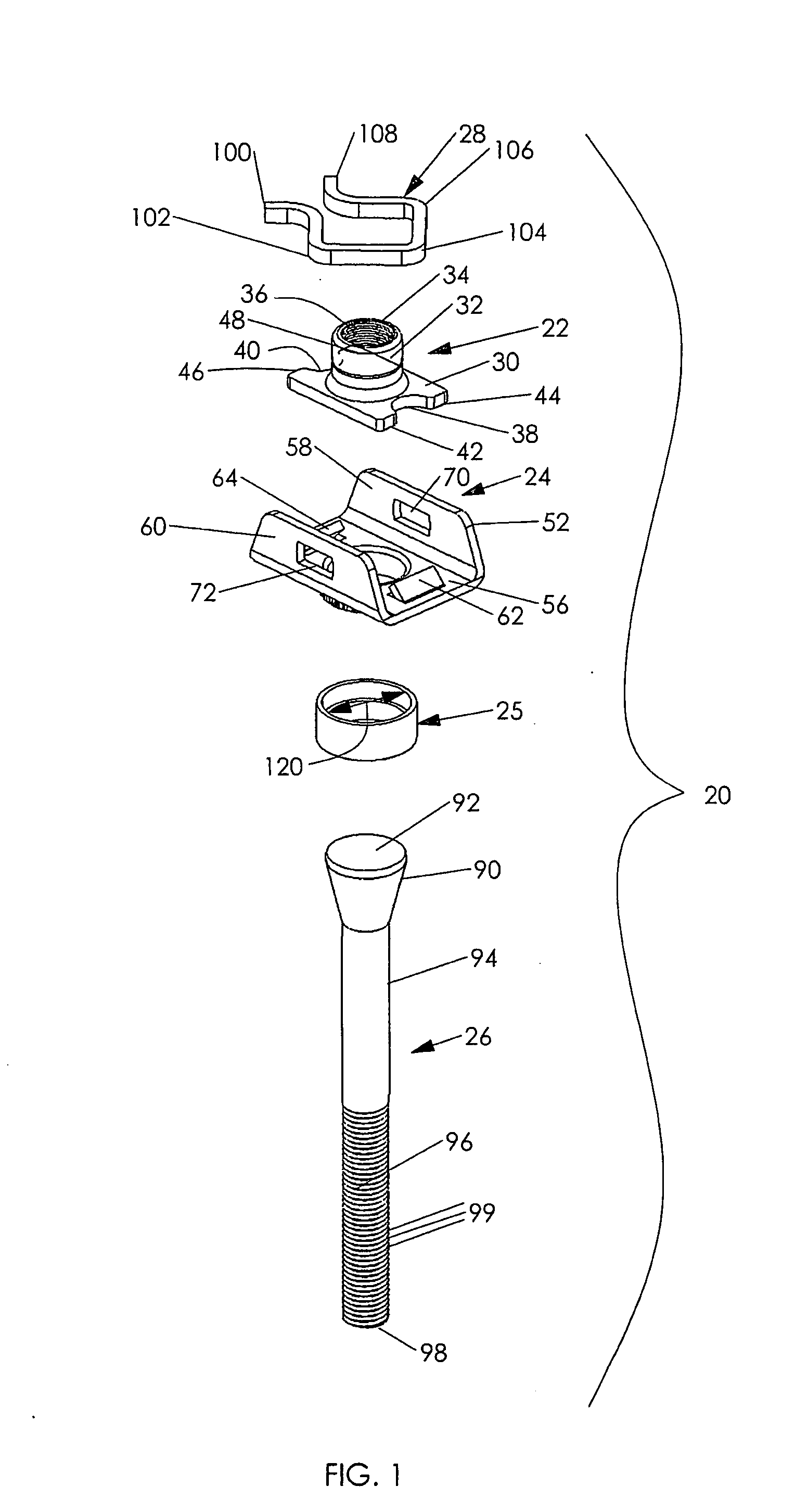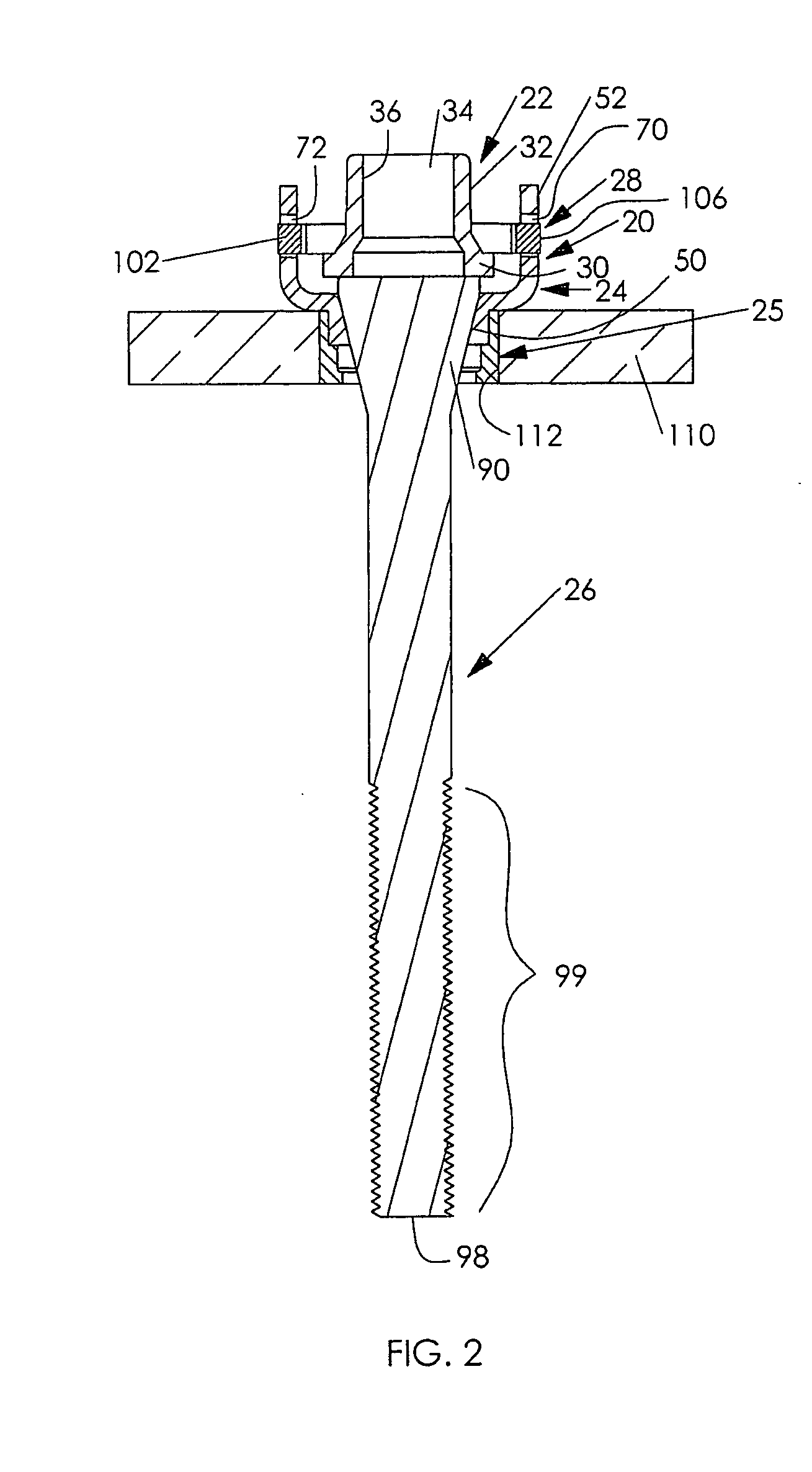Nut plate fastener assembly for hard metal materials
a technology of hard metal materials and fasteners, which is applied in the direction of fastening means, fastener tools, screws, etc., can solve the problems of not being able to achieve the mechanical properties required, affecting the performance of the workpiece, and not being able to achieve the proper shear load transfer. achieve the effect of not risking the delamination of the workpi
- Summary
- Abstract
- Description
- Claims
- Application Information
AI Technical Summary
Benefits of technology
Problems solved by technology
Method used
Image
Examples
Embodiment Construction
[0054] While this invention may be susceptible to embodiment in different forms, there are shown in the drawings and will be described herein in detail, specific embodiments with the understanding that the present disclosure is to be considered an exemplification of the principles of the invention, and is not intended to limit the invention to that as illustrated.
[0055]FIG. 1 is an exploded perspective view of a rivetless nut plate assembly 20 which is in accordance with an embodiment of the present invention. The rivetless nut plate assembly 20 is configured such that it can be installed into an aperture of a composite material workpiece without risking delamination of the workpiece, and can be installed without having to use bonding agents, additional holes or satellite rivets.
[0056] The nut plate assembly 20 includes a nut 22, a holding bracket 24, a sleeve 25 and a retainer 28. Additionally, before installation, the nut plate assembly 20 includes a stem 26 that is used to inst...
PUM
 Login to View More
Login to View More Abstract
Description
Claims
Application Information
 Login to View More
Login to View More - R&D
- Intellectual Property
- Life Sciences
- Materials
- Tech Scout
- Unparalleled Data Quality
- Higher Quality Content
- 60% Fewer Hallucinations
Browse by: Latest US Patents, China's latest patents, Technical Efficacy Thesaurus, Application Domain, Technology Topic, Popular Technical Reports.
© 2025 PatSnap. All rights reserved.Legal|Privacy policy|Modern Slavery Act Transparency Statement|Sitemap|About US| Contact US: help@patsnap.com



